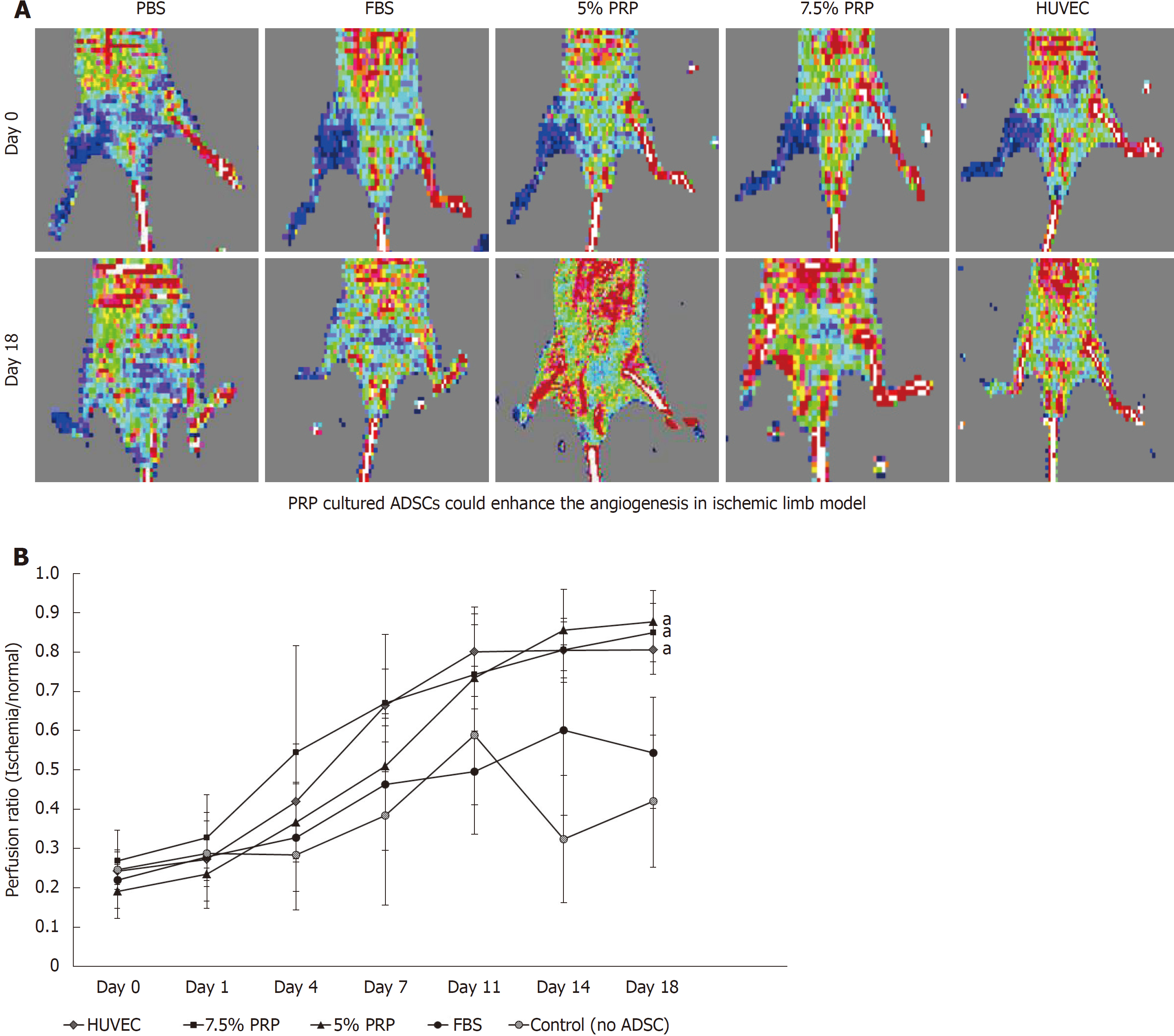Copyright
©The Author(s) 2018.
World J Stem Cells. Dec 26, 2018; 10(12): 212-227
Published online Dec 26, 2018. doi: 10.4252/wjsc.v10.i12.212
Published online Dec 26, 2018. doi: 10.4252/wjsc.v10.i12.212
Figure 6 Ischemic hindlimb model.
A: Red and blue indicate areas with normal blood perfusion and ischemia, respectively. Although serial laser Doppler images showed some natural recovery of hindlimb blood flow in control groups, administering PRP-preconditioned ADSCs to the ischemic site increased tissue perfusion; B: Quantification was done by perfusion ratio (%): blood flow in operated hindlimb/blood flow in non-operated hindlimb. The revascularization rate remained low in the phosphate buffer solution and 10% FBS groups, with the ratios of 0.42 ± 0.16 and 0.54 ± 0.14, respectively, on day 18. The PRP and HUVEC groups showed significantly higher ratios on day 18 (0.88 ± 0.08, 0.85 ± 0.07, 0.81 ± 0.06 for 5% PRP, 7.5% PRP, and HUVECs, respectively) than the phosphate buffer solution group (0.42 ± 0.17). Data are expressed as means ± standard deviation. aP < 0.01 vs 10% FBS group. PRP: Platelet-rich plasma; FBS: Fetal bovine serum; ADSC: Adipose-derived stem cell; HUVEC: Human umbilical vein endothelial cell; PBS: Phosphate buffer solution.
- Citation: Chen CF, Liao HT. Platelet-rich plasma enhances adipose-derived stem cell-mediated angiogenesis in a mouse ischemic hindlimb model. World J Stem Cells 2018; 10(12): 212-227
- URL: https://www.wjgnet.com/1948-0210/full/v10/i12/212.htm
- DOI: https://dx.doi.org/10.4252/wjsc.v10.i12.212









